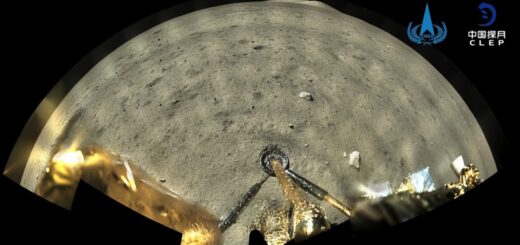“Electronic Skin” That Imitate Human Skin’s Function And Properties Developed By CU Boulder Researchers
A new type of malleable, self-healing and fully recyclable “electronic skin” material has been developed by University of Colorado Boulder researchers.
“Electronic skin” – with applications ranging from robotics and prosthetic development to better biomedical devices – is a thin, translucent material that can mimic the function and mechanical properties of human skin.

Section of “e-skin” Image credit: Jianliang Xiao / University of Colorado Boulder
A number of different types and sizes of wearable e-skins are now being developed in labs around the world as researchers recognize their value in diverse medical, scientific and engineering fields.
The new CU Boulder e-skin has sensors embedded to measure pressure, temperature, humidity and air flow, said
Assistant Professor Jianliang Xiao, who is leading the research effort with CU Boulder chemistry and biochemistry Associate Professor Wei Zhang.
Also called “e-skin”, the material has many distinctive properties, including a novel type of covalently bonded dynamic network polymer, known as polyimine that has been laced with silver nanoparticles to provide better mechanical strength, chemical stability and electrical conductivity.
“What is unique here is that the chemical bonding of polyimine we use allows the e-skin to be both self-healing and fully recyclable at room temperature,” said Xiao.
“Given the millions of tons of electronic waste generated worldwide every year, the recyclability of our e-skin makes good economic and environmental sense.”
Many people are familiar with the movie The Terminator, in which the skin of film’s main villain is “re-healed” just seconds after being shot, beaten or run over, said Zhang.
While the new process is not nearly as dramatic, the healing of cut or broken e-skin, including the sensors, is done by using a mix of three commercially available compounds in ethanol, “Zhang said.
Another benefit of the new CU Boulder e-skin is that it can be easily conformed to curved surfaces like human arms and robotic hands by applying moderate heat and pressure to it without introducing excessive stresses.
“Let’s say you wanted a robot to take care of a baby,” said Zhang. “In that case you would integrate e-skin on the robot fingers that can feel the pressure of the baby. The idea is to try and mimic biological skin with e-skin that has desired functions.”
The device can be recycled and used to make new, according to researchers.
Research is published in the journal Science Advances.



 Creators of mankind
Creators of mankind Description of “Tall white aliens”
Description of “Tall white aliens” Where they came from?
Where they came from? About hostile civilizations
About hostile civilizations The war for the Earth
The war for the Earth “Tall white aliens” about eternal life
“Tall white aliens” about eternal life Video: “Nordic aliens”
Video: “Nordic aliens” Aliens
Aliens Alien encounters
Alien encounters The aliens base
The aliens base UFO
UFO Technology UFO
Technology UFO Underground civilization
Underground civilization Ancient alien artifacts
Ancient alien artifacts Military and UFO
Military and UFO Mysteries and hypotheses
Mysteries and hypotheses Scientific facts
Scientific facts


















